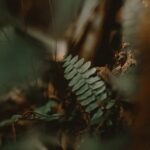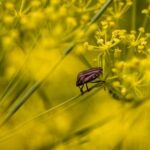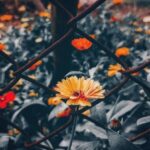Design Florida Butterfly Garden Layout:
Creating a beautiful and vibrant butterfly garden in your backyard is not only a delightful way to enhance the visual appeal of your outdoor space, but it also plays a significant role in supporting the local ecosystem. In Florida, where the warm climate and diverse landscape provide the perfect environment for these delicate creatures, designing a butterfly garden should be high on every nature lover’s list.
Whether you’re an avid gardener or new to the world of horticulture, this article will guide you through the process of creating a stunning and well-planned butterfly garden in Florida.
Florida is home to a wide variety of native butterfly species that rely on specific habitats for survival. Understanding their preferences and needs is essential when designing a butterfly garden that will attract and support them. By providing suitable source plants for nectar, host plants for larvae, sheltered resting spots, and water sources, you can create an inviting habitat that will entice numerous butterfly species to visit your garden regularly.
When planning your Florida butterfly garden layout, choosing the right plants is crucial. Native plant species are particularly effective at attracting butterflies due to their natural characteristics – colors that butterflies are drawn to, enticing scents, and abundant nectar production. By selecting these plants carefully and arranging them strategically within your garden design, you can create an irresistible haven for butterflies while beautifully enhancing your outdoor space.
In addition to its environmental benefits, designing a butterfly garden in Florida also offers several advantages for homeowners. Not only can you enjoy the beauty of colorful fluttering wings during each season, but butterflies also serve as vital pollinators – contributing to plant reproduction while ensuring the growth of lush flora throughout your area. Creating a backyard sanctuary for these elegant creatures brings not just joy but helps sustain biodiversity within your community.
So let’s dive into the world of designing a Florida butterfly garden. From understanding native species to selecting appropriate plants and creating an optimal layout – this article will provide you with all the necessary knowledge and tips to bring your butterfly garden vision to life.
Whether you’re a first-time gardener or a seasoned enthusiast, get ready to embark on an exciting journey that will transform your outdoor space into a haven of beauty, tranquility, and vibrant fluttering wings.
Understanding the Native Butterfly Species in Florida
Florida is home to a diverse range of butterfly species, each with unique characteristics and preferences. Understanding these native butterfly species is crucial when designing a butterfly garden in Florida. By creating an environment that meets their habitat requirements, you can attract these beautiful creatures and provide them with a safe and welcoming space.
1. Monarch Butterflies: Monarch butterflies are one of the most well-known butterfly species in North America. These iconic butterflies migrate through Florida during their annual journey. Monarchs prefer flowering plants such as milkweed, which serves as both a nectar source for adult butterflies and as food for their caterpillars.
2. Zebra Longwing Butterflies: Zebra longwing butterflies are native to Florida and can often be found in subtropical habitats, including coastal regions and hammocks. They are attracted to bright-colored flowers with tubular shapes, such as pentas or lantanas. These butterflies also require larval host plants like passionflower vine for successful reproduction.
3. Gulf Fritillary Butterflies: Gulf fritillary butterflies are commonly seen across Florida year-round due to its favorable climate. They prefer open areas with lots of sunlight, such as meadows or gardens. Passionflower vine is essential for attracting these beautiful orange-winged butterflies since it serves as both a nectar source and a host plant for their larvae.
4. Eastern Black Swallowtail Butterflies: Eastern black swallowtail butterflies are striking insects characterized by their black wings with bright yellow spots and stripes. They can be found throughout Florida in various habitats ranging from open fields to woodlands. The preferred host plants for this species include plants from the carrot family such as parsley, dill, or fennel.
To create an inviting environment for these native butterfly species and others found in Florida, it is crucial to research their specific needs and preferences. By incorporating the right host plants, nectar sources, and habitat features into your butterfly garden design, you can attract a wide variety of butterflies and support their lifecycle. Additionally, providing different types of plants that bloom at different times throughout the year ensures a constant food source for them.
Selecting the Right Plants for a Florida Butterfly Garden
Overview of Native Butterfly Species in Florida
Before selecting the right plants for your Florida butterfly garden, it’s important to be familiar with the native butterfly species in the area. Florida is home to a wide variety of butterfly species, each with its own preferred habitats and host plants. Some common butterfly species found in Florida include the Zebra Longwing, Gulf Fritillary, Monarch, and Eastern Tiger Swallowtail.
The Zebra Longwing (Heliconius charithonia) is an iconic butterfly in Florida known for its distinct black and yellow striped wings. They are attracted to passionflowers and will lay their eggs exclusively on this plant. The Gulf Fritillary (Agraulis vanillae) is another common sight in Florida gardens, with bright orange wings and silver spots. Their host plants include passionflowers as well as various species of vines.
The Monarch (Danaus plexippus) is a popular visitor to many butterfly gardens across the state. Its vibrant orange wings adorned with black veins make it easily recognizable. Milkweed plants are crucial for attracting Monarchs as they serve as both nectar sources and host plants for their larvae.
Lastly, the Eastern Tiger Swallowtail (Papilio glaucus) can be seen gracefully fluttering through Florida gardens. This large butterfly has bright yellow wings with black stripes, resembling a tiger’s coloration. Some of their preferred host plants include wild cherry trees, tulip poplars, sweetbay magnolias, and black locusts.
Native Plant Species That Attract Butterflies
When designing a Florida butterfly garden, it’s essential to choose native plant species that provide food sources for adult butterflies and host plants for caterpillars. Native plants have co-evolved with local wildlife over time and are better suited to support biodiversity compared to non-native plants.
Some popular native plants in Florida that attract butterflies include:
- Firebush (Hamelia patens): This shrub produces vibrant red or orange tubular flowers that are a favorite of many butterfly species, including Zebra Longwings and Gulf Fritillaries. It also serves as a host plant for the White Peacock butterfly.
- Blanketflower (Gaillardia pulchella): With its bright yellow and red flowerheads, the Blanketflower is highly attractive to various butterfly species, such as Monarchs and Gulf Fritillaries.
- Tickseed (Coreopsis spp.): This flowering perennial comes in various colors like yellow, orange, and red. It attracts butterflies like the Eastern Tiger Swallowtail and Zebra Longwing.
- Milkweed (Asclepias spp.): As mentioned earlier, milkweed plants are essential for attracting Monarch butterflies. Their leaves serve as food for caterpillars, while their nectar-rich flowers provide nourishment for adult Monarchs and other butterfly species.
When choosing plants for your butterfly garden, consider selecting a variety that bloom at different times throughout the year to provide a continuous source of nectar for butterflies. Additionally, aim for diversity in color and scent to attract a wide range of butterfly species.
Remember to incorporate both larval host plants and nectar-producing plants to support all stages of the butterfly’s life cycle. By creating a garden filled with native plants that attract butterflies, you will be playing an active role in conserving these beautiful creatures while enjoying their presence in your outdoor space.
Designing the Layout
When planning the layout of your Florida butterfly garden, consider the following tips and guidelines:
1. Placement of plants: Place taller plants towards the back of your garden to create a natural backdrop. This not only adds visual interest but also provides shelter for butterflies during unfavorable weather conditions. Shorter plants should be placed towards the front to allow easy observation.
2. Creating different levels: Butterflies are drawn to gardens that offer various heights and layers. Incorporate shrubs, tall grasses, or climbing vines to provide vertical elements in your garden. Adding hanging baskets or trellises can also create additional interest.
3. Incorporating water features: Butterflies need access to water for drinking and bathing purposes. Include a shallow dish or birdbath in your butterfly garden as a water source. It’s important to keep it clean by changing the water frequently to prevent mosquito breeding.
In addition to these tips, it’s crucial to choose plant species that provide both nectar sources for adult butterflies and host plants for their caterpillars. Ensuring there is a continuous bloom from spring through fall will also attract more butterflies to your garden.
Consider including flowers like milkweed (Asclepias spp.), pentas (Pentas lanceolata), black-eyed Susans (Rudbeckia spp.), lantanas (Lantana spp.), salvia (Salvia spp.), verbena (Verbena spp.), and zinnias (Zinnia spp). These native Florida plants are known to attract a variety of butterfly species with their vibrant colors, fragrances, and nectar-rich blooms.
By carefully designing your Florida butterfly garden layout and selecting the right plants, you can create an inviting habitat that not only supports butterfly conservation but also adds beauty and enjoyment to your outdoor space.
Creating a Welcoming Habitat
In addition to selecting the right plants for a Florida butterfly garden, it is important to include additional features that attract butterflies and create a welcoming habitat. One way to do this is by including host plants for butterfly larvae.
These are the plants on which butterflies lay their eggs, and they serve as a source of food for the emerging caterpillars. By providing host plants in your garden, you can support the complete life cycle of butterflies and help increase their population.
A variety of host plants can be included in a Florida butterfly garden. For example, the Gulf Fritillary butterfly prefers the passionflower vine as its host plant, while the Zebra Longwing butterfly lays its eggs on passionflowers as well as other related vine species. The Monarch butterfly relies on milkweed plants as its primary host plant. By incorporating these specific plants into your garden design, you can attract these particular species and provide them with the necessary resources for reproduction.
In addition to host plants, providing shelter and resting spots is crucial for butterflies. Butterflies spend much of their time basking in the sun to warm their wings or resting under leaves or branches. Including tall grasses or tucking nectar-producing flowers close together can create hiding spots where butterflies can rest undisturbed. Having areas with different levels of vegetation also provides shelter from predators and harsh weather conditions.
Another essential feature to include in a Florida butterfly garden is a water source. Butterflies use water not only for drinking but also for keeping their wings moist. Adding shallow dishes or saucers filled with clean water at ground level will attract butterflies and provide them with a much-needed resource. Be sure to keep the water fresh and clean by changing it regularly to prevent breeding grounds for mosquitoes.
By including host plants, providing shelter and resting spots, and creating a water source in your Florida butterfly garden, you can create an inviting habitat that will attract and support a variety of butterfly species. These additional features will not only enhance the beauty of your garden but also contribute to the overall health and sustainability of the butterfly population.
| Additional Features | Benefits |
|---|---|
| Including host plants for butterfly larvae | Supports the complete life cycle of butterflies and increases their population |
| Providing shelter and resting spots | Gives butterflies a place to seek refuge from predators and harsh weather conditions |
| Creating a water source | Provides butterflies with drinking water and helps them keep their wings moist |
Managing Pests and Diseases
Creating a successful butterfly garden in Florida involves not only attracting beautiful butterflies but also managing pests and diseases that can harm both the plants and the butterflies themselves. By taking proper preventive measures and using environmentally friendly pest control methods, you can maintain a healthy and thriving butterfly garden.
One of the key steps in preventing pests and diseases is to regularly inspect your plants for any signs of infestation or damage. Look for common pests such as aphids, caterpillars, and spider mites, as well as symptoms of diseases like fungal infections or wilting. Early detection is crucial in preventing these problems from spreading and causing serious damage to your garden.
To control pests without harming butterflies or other beneficial insects, it is advisable to use natural pest control methods. For example, introducing ladybugs or lacewings into your garden can help control aphid populations, as these insects are natural predators. Another effective method is using organic insecticidal soaps or neem oil sprays, which target pests while being safe for butterflies when used correctly.
In addition to preventing pests, it is important to maintain proper garden hygiene. Remove any fallen leaves or diseased plants from your butterfly garden promptly as they can harbor pests or transmit diseases. Regularly clean your gardening tools to prevent the spread of pathogens that might infect the plants.
By following these tips, you can minimize the risk of common pests and diseases in your Florida butterfly garden while promoting a healthy environment for both the plants and the beloved butterflies. With a little effort and care, you can create a thriving oasis that not only attracts beautiful winged visitors but also contributes positively to the local ecosystem.
Maintenance and Care
Maintaining a Florida butterfly garden requires proper care and attention to ensure its long-term health and beauty. This section will provide essential information on how to properly maintain a butterfly garden in Florida, including watering, fertilizing, pruning, and dealing with seasonal changes.
Watering is crucial for the survival of plants in a butterfly garden. It is important to provide sufficient water to keep the soil moist but not saturated. One effective method is to use drip irrigation or soaker hoses, which deliver water directly to the plant roots while minimizing water loss through evaporation. It is recommended to water the garden early in the morning or late in the evening to reduce evaporation during hot summer months.
Fertilizing the plants in a Florida butterfly garden helps promote healthy growth and vibrant blooms. Organic fertilizers are ideal for maintaining an eco-friendly garden. Choose slow-release fertilizers that provide a steady supply of nutrients over time. Avoid using synthetic fertilizers that can harm butterflies and beneficial insects.
Pruning is an essential task in maintaining a well-groomed butterfly garden. Regularly trim back faded flower heads to encourage continuous blooming and prevent plants from going to seed. Prune any damaged or diseased leaves or branches promptly. Additionally, removing excessive growth can help create space for airflow and prevent overcrowding.
Florida experiences distinct seasonal changes, so it’s important to adapt your maintenance routine accordingly. In hot summer months, increase watering frequency as high temperatures and dry conditions can quickly dehydrate plants. During cooler winter months, reduce watering but monitor soil moisture levels regularly as some plants may still require occasional watering.
By following these maintenance practices, you can enjoy a flourishing butterfly garden year-round in Florida. Proper watering, fertilizing, pruning, and adapting to seasonal changes will help ensure that your garden remains vibrant and attractive, providing a haven for butterflies and other pollinators.
Enhancing the Garden With Additional Features
In addition to selecting the right plants and designing the layout of your Florida butterfly garden, there are many creative ideas you can implement to enhance its beauty and functionality. These additional features not only add visual interest but also provide practical benefits for both butterflies and other wildlife.
One popular feature to consider incorporating into your butterfly garden is bird feeders. By providing a reliable food source for birds, you create a balanced ecosystem where they can help control pests like caterpillars and aphids. Choose bird feeders that are designed to attract a variety of bird species, such as those offering different types of seeds or nectar. Place them strategically throughout your garden, keeping in mind that birds prefer locations with adequate shelter nearby.
Installing butterfly houses is another fantastic way to enhance your butterfly garden. These small structures provide sheltered spots for butterflies to rest, roost, and seek refuge from harsh weather conditions. Butterfly houses are available in various designs, but it is essential to choose ones that mimic natural materials like wood or bamboo. Position them in sunny areas protected from strong winds at eye level or slightly higher.
To add aesthetic appeal and functionality, consider incorporating attractive features like rocks and pathways into your butterfly garden. Rocks not only create beautiful focal points but also act as sunning spots for butterflies to warm their wings. Use different sizes and shapes of rocks strategically throughout your garden to provide varying heights for butterflies to perch on.
Additionally, create pathways using stepping stones or gravel that meander through your garden. These pathways not only guide visitors through the space but also prevent soil compaction by reducing foot traffic on planting beds.
By adding bird feeders, installing butterfly houses, and incorporating attractive features like rocks and pathways, you can create a Florida butterfly garden that is not only visually stunning but also provides essential resources for butterflies and other wildlife. These additional features enhance the overall functionality of your garden and contribute to a thriving ecosystem.
Conclusion
In conclusion, designing a well-planned butterfly garden in Florida is not only beneficial for the environment but also provides numerous advantages for homeowners. By understanding the native butterfly species in Florida and selecting the right plants for a butterfly garden, individuals can create an inviting habitat that attracts these beautiful creatures.
One of the key points discussed in this article is the importance of choosing native plant species that attract butterflies. These plants have specific characteristics, such as color, scent, and nectar production, that make them appealing to butterflies. By incorporating these plants into the garden layout and creating different levels, individuals can create a visually stunning and functional butterfly garden.
Additionally, providing additional features like host plants for butterfly larvae, shelter and resting spots, and a water source can further enhance the attractiveness of the garden. These features not only provide essential resources for butterflies at different stages of their life cycle but also create a welcoming habitat that encourages them to visit and stay in the garden.
In summary, designing a well-planned butterfly garden in Florida requires careful consideration of native plant species, layout design, additional features, pest management strategies, and proper maintenance techniques. By following these guidelines and incorporating creative ideas like bird feeders, butterfly houses, rocks, and pathways into the garden design, individuals can create a beautifully landscaped space that not only attracts butterflies but also enhances the overall aesthetic appeal of their outdoor space.
So why wait? Start planning your Florida butterfly garden today and enjoy the beauty of these magnificent creatures while contributing to their conservation efforts.
Frequently Asked Questions
How Do You Plan a Butterfly Garden in Florida?
Planning a butterfly garden in Florida involves several key steps. First, research the local butterfly species that are native to the area as well as the plants they prefer. Consider the climate and soil conditions in your specific region of Florida to choose plants that will thrive there. Next, select a location for your garden that receives ample sunlight and has protection from strong winds.
Prepare the soil by removing any weeds or grass and adding compost for better drainage. When it comes to planting, arrange the plants in groups according to their height, with taller ones at the back and shorter ones at the front, creating layers for butterflies to perch on. Finally, provide water sources like shallow dishes or birdbaths with stones for landing spots, as well as some flat rocks for basking.
How Do You Layout a Butterfly Garden?
The layout of a butterfly garden should aim to attract and benefit butterflies throughout their life cycle. Start by designating separate areas within your garden for different purposes: adult feeding stations, egg-laying sites, caterpillar host plants, and nectar sources. Place nectar-rich flowers in sunny spots where butterflies can feed easily, but also include some shade-loving plants for variety.
Additionally, incorporate a diverse range of flower shapes, colors, and sizes to attract a wider variety of butterfly species. To create sheltered nooks and resting spots, include tall grasses or shrubs along the borders of your garden. By carefully planning and arranging these elements in an aesthetically pleasing manner, you can both attract butterflies and enjoy a beautiful garden.
How to Build a Butterfly Garden in Central Florida?
Building a butterfly garden in Central Florida requires understanding the particular needs of the region’s climate and native species. First, choose native plants that are adapted to Central Florida’s heat and humidity – these will not only be more likely to thrive but will also support local butterfly populations more effectively than non-native plants. Popular host plants for Central Florida butterflies include milkweed varieties (such as Asclepias spp. ), parsley, and citrus trees.
You can attract butterflies by planting nectar-rich flowers like pentas, lantana, and salvia. Consider incorporating some butterflies’ favorite food sources, such as rotting fruits or a butterfly feeding station with a sugar-water solution. Finally, remember to include some flat stones or sand patches for basking and provide shallow water sources for drinking and puddling behaviors.

Welcome to my gardening blog! I am passionate about plants and enjoy sharing my knowledge and experiences with others. In this blog, I will write about everything related to gardening, from tips on how to get started to updates on my own garden projects.





